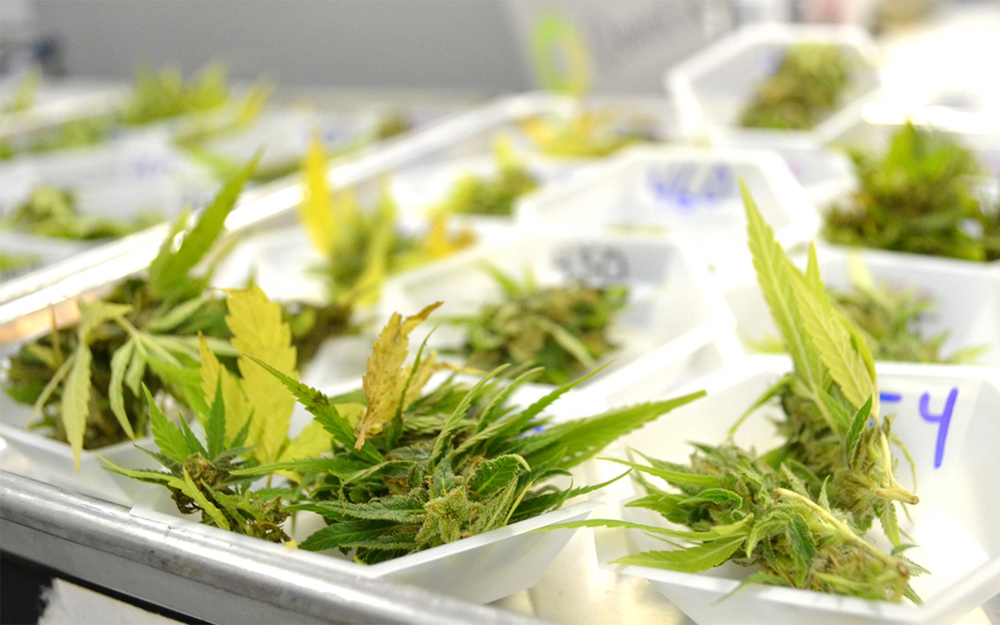
BY RUTH HILL R.N.
There are those who tell you recreational marijuana/cannabis, or (RC), and medical marijuana/cannabis (MC) are the same. In today’s booming market that statement could not be further from the truth. The difference is not that both have cannabinoids present, (THC and CBD), the difference is whether it was tested for pests, mold, metals, cannabinoids present, terpenes present, how it’s ingested, how it’s cultivated, and lastly how it’s extracted.
Remember hemp CBD is regulated by the Federal Agricultural Department. If we want to use MC to reverse disease it must have THC. The new synthetic MC drug approved by the FDA for medical use in the U.S., is liquid Marinol or dronabinol, which was first synthesized for the treatment of nausea and vomiting in HIV and cancer patients. The brand name is Syndros, developed by Insys. Syndros is an isomer, meaning it is synthetic molecules developed in the laboratory, this is not botanical MC (directly from the plant). Syndros comes in one ounce bottles of 5mg/1ml, that costs $1000.00, not readily affordable for the public. Who will use it is questionable when you can get a months’ supply of THC to treat nausea and vomiting in your local dispensary for $72. Since it is a Schedule II drug, insurances pay for this rip-off.
Over the past fifty years MC has been cultivated, tested, and designed for specific disease entities in Israel, where the biggest farms in the world are located. Israel will produce over 80 tons (more than 175,000 pounds) per year of medical grade cannabis. Israel is where THC and the endocannabinoid system was discovered by Raphael Mechoulam.
Due to regulatory barriers, research and development of cannabis in the U.S. can take years to develop. The only legal place to obtain the cannabis for research, is from the Univ. of Miss where the purity, consistency, potency, strain quality, and extraction is suspect, and would probably fail the regulatory rules designed in some states that have legalized cannabis.
While it is illegal to import cannabis, these rules can be circumvented by coordinating with research in other countries. The Israeli government invests millions in research and development of MC. According to Saul Kaye of iCan, about 50 U.S. cannabis companies are investing with Raphael Mechoulam’s laboratory for phase 1 and phase 2 clinical research trials in clinics and hospitals. Once they establish the compound is safe they will enter phase 3 level trials in the U.S. resulting in new botanical MC drugs. There are at least 120 clinical trials being conducted in Israel.
The other advantage working with Israel is companies can research orphan drug indications. U.S. pharmaceuticals do not pursue them because there is not a big enough market. A smaller number of people are needed for the study, speeding up the process of phases 1 and 2.
Dr. Schackelford, a Harvard graduate physician, who in 2013 was the first physician to prescribe cannabis to a child for treating seizures, left the U.S. for Israel due to research restrictions. “The U.S. government has funded $1.4 billion in marijuana research since 2008,” says Schackelford. “Yet $1.1 billion of that went to studying addiction, withdrawal and drug abuse,” problems that barely exist with cannabis when compared to the effects of other legal medications, like prescription painkillers, which killed more than 17,000 Americans in 2016. (Rolling Stone Article by Yardena Schwartz August 24, 2017).
Israel has the highest ratio of cannabis users in the world, 27% between the ages of 18-65 have used cannabis in the past year, Iceland is 18%, the U.S. is 16%.
Even the National Institutes of Health (NIH) has funded cannabis research in Israel. Indeed, much of Professor Mechoulam’s groundbreaking research was funded by the American government, which provided him with grants to the tune of $100,000 a year for over four decades, says Mechoulam. There is no end to the hypocrisy and lies perpetrated by our politicians in the federal government.
send questions to hilruth@gmail.com










































